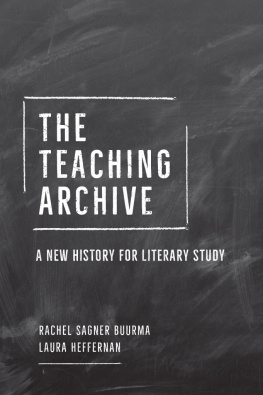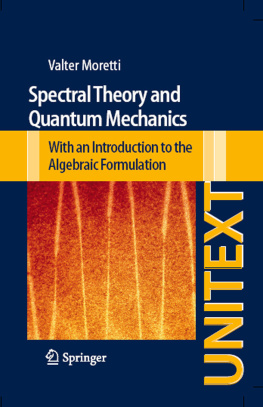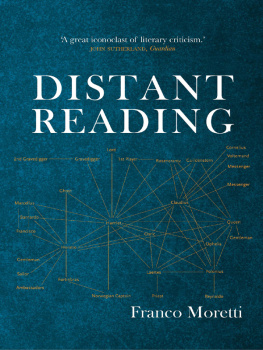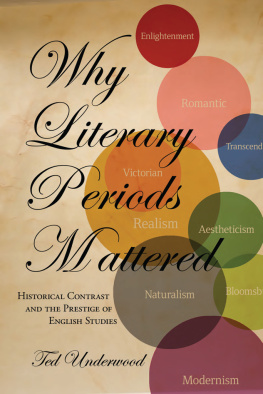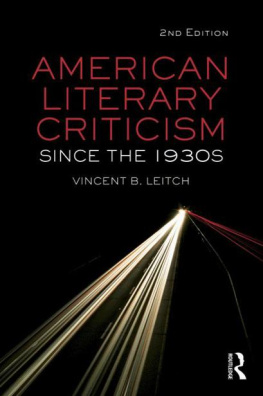The author and publisher have provided this e-book to you for your personal use only. You may not make this e-book publicly available in any way. Copyright infringement is against the law. If you believe the copy of this e-book you are reading infringes on the authors copyright, please notify the publisher at: us.macmillanusa.com/piracy.
I
. Behind this book are two universities: Stanford, where I taught my last course in the spring of 2016; and Salerno, where I taught the first one, in the fall of 1979. In many ways, the two places could not be more different. Stanford is the worlds richest private university, in the midst of Silicon Valley; Salerno was a minor public university, located near the osso dItalia: the bone that is left once the meat has been eaten away; a barren region, further ravaged by the earthquake of 1980. Many Stanford students come from superb high schools and, if theyre interested in English, have at their disposal a department with thirty full-time professors; at Salerno, they came from schools that lacked just about everything, and the entire English department consisted of two inexperienced thirty-year-olds. Due to the vagaries of the heating system, in that winter forty years ago I learned to lecture in my overcoat, to a room filled with overcoats; at Stanford, anything of this sort would be unimaginable. And so on, and on. But there was one point in common: in both places, students seemed to know very little about literary history. Something had to be done.
In the discussions that led to that decision, some colleagues described the aim of the course with the word remedial. Remedial, remedium: restoring health after an illness (its root, mederi, is the same that medicine also comes from); as someone said, lets teach them what they havent learned in high school. And one understands the logic, of course, but those years in Salerno, where things were definitely worse, had taught me that what matters is not what we ignore, but what we know, and how we know it. Students have learned little? Then lets give them more. If they have no idea what poetry is, lets see what happens by compressing into a single lecture the basic concepts of verse and prose, an analysis of Song of Myself, and some thoughts on lyric and modernity. Too much, in too short a time? Yes; but thats what the university is for: trying to do more than is commonly considered reasonable. Teaching as a wager; the opposite of passing on what one has to know about a discipline. Or at least: this is how I (mis)understood the task I had been given, and the spirit in which I taught that class, and have written this book.
II
This was not the kind of literary historyone author after another, in a long uninterrupted chainthat I had been taught in my university years: where continuity was so pervasive and natural it seemed to make explanations superfluous. The irregular chessboard I put in front of my students was too strange to be taken for granted. Literary history had become a problem, that asked for a solution.
. Whitman and Free Verse, read the title of the first class on poetry and modernity; given that the lectures main point was the bifurcation between two incompatible conceptions of modern poetry, Walt Whitman or Charles Baudelaire? would have been much better. And so it went, class after class; every topic would split into two, and generate an opposition. The pleasure of early mass culture could take the form of a cheap anonymous dime novel, or of a Sherlock Holmes story in The Strand; the pleasure of 1950s adventures, the spacious sunlight of a Western, or the ill-lit claustrophobia of a film noir. At times, the opposition ran across two successive lectures (free indirect style/stream of consciousness; Gertrude Stein/Virginia Woolf; Endgame/Death of a Salesman); in the final class, on the Dutch golden age and twentieth-century American painting, it even spanned centuries. In every case, conflict emerged as the key mechanism behind the history I was trying to teach; conflict between high literature and pulp fiction, of course, but just as much between texts that belonged to the same niche of the literary field, such as Jamess Beast in the Jungle and Joyces The Dead. Antagonism ruled, everywhere; and it did so through the medium of form. For Whitman, the poetry of modernity required a maximum of simplicity; for Baudelaire, of complexity. Form against form. Dashing Diamond Dick tried to conquer a broad audience by being explicit and excessive; The Adventure of the Speckled Band, by being ambiguous and restrained. Form against form. To understand the logic behind this conflict, each lecture explored three interconnected aspects of literary form: its use of language and rhetoric; the historical context of its emergence; and its potential appeal for contemporary audiences. Technique, history, and pleasure: the how, why, and what for of literature. It didnt matter where the argument started from: the discussion of free indirect style took off from a few sentences in Austen, and that on the stream of consciousness, which followed two days later, from Simmels sociology of metropolitan life; the lecture on Vermeer began with a narrative analysis of his domestic scenes, and that on Rembrandt with the texture of the skin of his self-portraits. It didnt matter where one started, as long as all aspects of form were activated, doing justice to the concepts complexity. Complexity, though not perfection: committed to disparate imperatives, and caught in the never-ending campaigns of the literary field, great forms are necessarily contingent, tentativeproblematic, to use a keyword of the early Lukcs. That, despite being engaged on so many fronts, they accomplish as much as they dothis, not perfection, is their greatness.
As World War I reduced millions of men to a state of terrified impotence, Hemingways prose style provided an answer (if not exactly a resolution) to the trauma they had undergone. Here, the technical side of formHemingways spectacular use of prepositional phrases, for instanceemerges as the key mediation between the historical world and readerly pleasure. And if prepositional phrases sounds a bit esoteric it is, and its deliberate. Because this is how form works: with devices that are often microscopic, and hard to recognize. (Which is also, incidentally, why it works: by remaining undetected, microscopic devices dont disturb the immediacy of our pleasure.) But not everyone approves of this way of connecting (an aspect of) form and (an aspect of) historical experience; when Walter Benjamin sent his essay The Paris of the Second Empire in Baudelaire to the journal of the Institut fr Sozialforschung, Adorno rejected it because of the crass and rough connection instituted in the essay between the Baudelairian world of forms and the necessities of life:
I regard it as methodologically unfortunate to give conspicuous individual features from the realm of the superstructure a materialistic turn by relating them immediately and perhaps even causally to corresponding features of the infrastructure. Materialist determination of cultural traits is only possible if it is mediated through the total social process.
In the absence of such totalizing mediation, concluded Adorno, work such as Benjamins would find itself at the crossroads of magic and positivism. This spot is bewitched A superb formulation: but wrong. Contingent as forms are, some of their elements may easily achieve a certain autonomy, and analyzing them in (near-)isolation is perfectly legitimate; besides, what captures our attention and fixes itself in our memory is seldom a works entire structure; more often, its something on a much smaller scale, like Vinteuils


